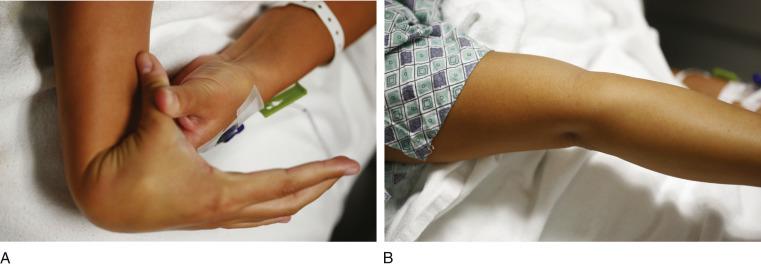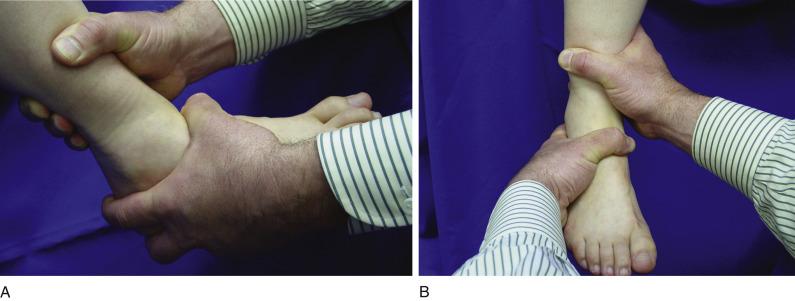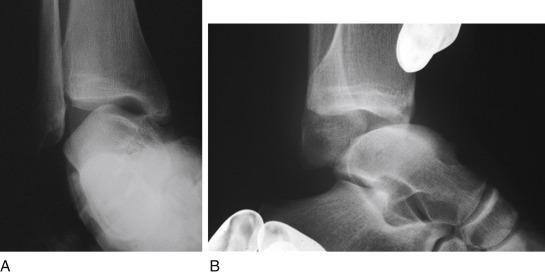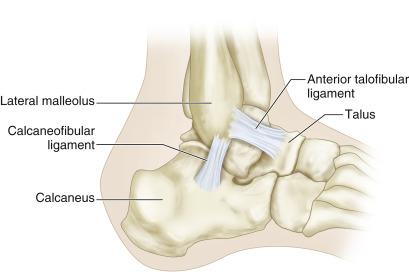Physical Address
304 North Cardinal St.
Dorchester Center, MA 02124
Symptomatic chronic laxity of the lateral ankle with repeated sprains
Limitation of activity
Failure of an appropriate rehabilitation program
The anterior drawer test rotates the talus forward around the intact medial axis of the deltoid ligament complex (except on very rare occasions when the deltoid is also lax). This rotation is most easily appreciated if the examiner, seated in front of the patient who is seated on an elevated exam table, uses the right hand to stress the left ankle and left hand to stress the right.
Ankle laxity is often part of a triad that includes peroneal tendinopathy and intraarticular pathology. Always consider these associated conditions. Isolated ankle laxity with repeated sprains does not usually cause persistent chronic pain. Peroneal tendinopathy, lateral impingement, or an osteochondral lesion will.
If a patient has heel varus, a Dwyer closing wedge osteotomy must be performed at the time of the Brostrom reconstruction. Forefoot varus of >10° may also require simultaneous correction, but this is much less common.
A brief ankle arthroscopy can be performed during the same surgery, just prior to a Brostrom repair. A prolonged arthroscopy causes too much extravasation of fluid, and the ligament repair should be done on a subsequent day.
Nonpathologic anterior ligamentous laxity is common; varus laxity is not.
Do not use numeric values for stress tests to determine which patients require surgery.
Do not assume that a patient with mild ankle laxity is symptomatic on that basis. Always compare both sides and exclude other pathology.
Physical therapy is commonly prescribed to a patient with ankle laxity in an attempt to avoid surgery. If the patient already has good peroneal strength, there probably is little benefit from therapy.
A patient with generalized hyperlaxity requires reinforcement of the Brostrom reconstruction with either an Internal Brace (Arthrex, Naples, FL), semitendinosus allograft, or a portion of the peroneus brevis tendon.
A patient with a high body mass index may also require reinforcement.
Determination of the role of ligament augmentation in accelerating return to sports.
Bone anchors can be used for a Brostrom reconstruction, although they have no proven clinical benefit compared with simple imbrication of the ligaments.
The effectiveness of the extensor retinaculum to reinforce the repair has not been proven.
Arthroscopic reconstruction of the ankle ligaments may be an alternative to an open procedure.
Document a cavovarus foot, with hindfoot varus or forefoot valgus, which predisposes a patient to repeated sprains.
Evaluate peroneal strength and the need for a strengthening program.
Assess for ankle or subtalar joint line tenderness and peroneal tenderness or dislocation.
Assess for subtalar motion (patients with a tarsal coalition have a high incidence of ankle laxity).
Test for generalized ligament laxity (positive findings include passive dorsiflexion of the fifth metacarpophalangeal joint to 90°, ability to appose the thumb to the volar forearm, and hyperextension of the elbow or knee beyond 0°; Fig. 64.1 ).

Perform manual anterior drawer and talar tilt tests (with or without radiographic documentation; Fig. 64.2 ).

Obtain weight-bearing anteroposterior, lateral, and mortise views of the ankle. A hindfoot alignment view is helpful in the evaluation of heel varus.
Bilateral comparative stress views may be helpful if the diagnosis is in question. These views can be performed fluoroscopically in the operating room, after the patient has received anesthesia, to confirm which ligaments need repair ( Fig. 64.3 ).

Magnetic resonance imaging (MRI) is essential if concomitant peroneal tendon, ankle, or subtalar joint pathology is suspected.
MRI alone is not helpful in diagnosing ankle laxity. Many patients have abnormal signals in the ligaments as a result of previous injury, and yet have no symptomatic laxity.
The anterior talofibular ligament (ATFL) originates 1.0–1.5 cm proximal to the distal tip of the fibula and inserts into the lateral talar body just beyond the articular surface ( Fig. 64.4 ).
The ligament is not discrete; it is contiguous with the joint capsule as a discrete capsular thickening.

The calcaneofibular ligament (CFL) is a discrete extraarticular structure (see Fig. 64.4 ).
It originates just inferior to the ATFL on the fibula and travels to the calcaneus, where it inserts 15 mm distal to the subtalar joint.
The ligament travels obliquely, in a plantar and posterior direction, and forms a variable 90–135° angle with the ATFL.
The lateral branch of the superficial peroneal nerve may be injured during the approach or inadvertently sewed into the repair.
If the peroneal tendons are abnormal and require surgical correction, use a longitudinal incision that extends obliquely across the distal fibula from posterior to anterior.
Varus of the heel should be corrected with a Dwyer osteotomy. Two incisions work best, unless the peroneal tendons also need surgery. In that case, make one long incision along the posterior border of the peroneal sheath, curving anteriorly distal to the fibula.
The patient is in a lateral decubitus position.
A femoral-sciatic or popliteal block is used.
A calf or thigh tourniquet allows for best exposure of the lateral ankle.
Become a Clinical Tree membership for Full access and enjoy Unlimited articles
If you are a member. Log in here